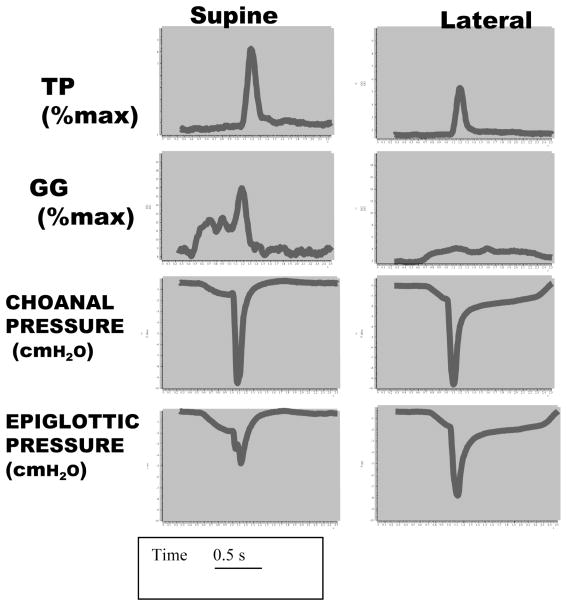Figure 1.
Example of raw data showing the negative pressure reflex. The figure shows data from an individual illustrating a pulse of negative pressure delivered during early inspiration in stable non-rapid eye movement sleep. The choanal pressure reflects the magnitude of the stimulus, while the epiglottic pressure reflects the extent to which the pressure pulse is transmitted through the pharynx (measure of collapsibility). The reflex activity of the genioglossus (GG) and tensor palatini (TP) is greater in the supine posture than in the lateral decubitus position. As well, the pharynx is more collapsible supine since less of the choanal pressure is transmitted in this position as compared with the lateral decubitus.

